We moved here because we love the forest…
Now we need to learn how to live within our Wildland Urban Interface (WUI) in a way that protects our homes and improves the health of the forest around it.
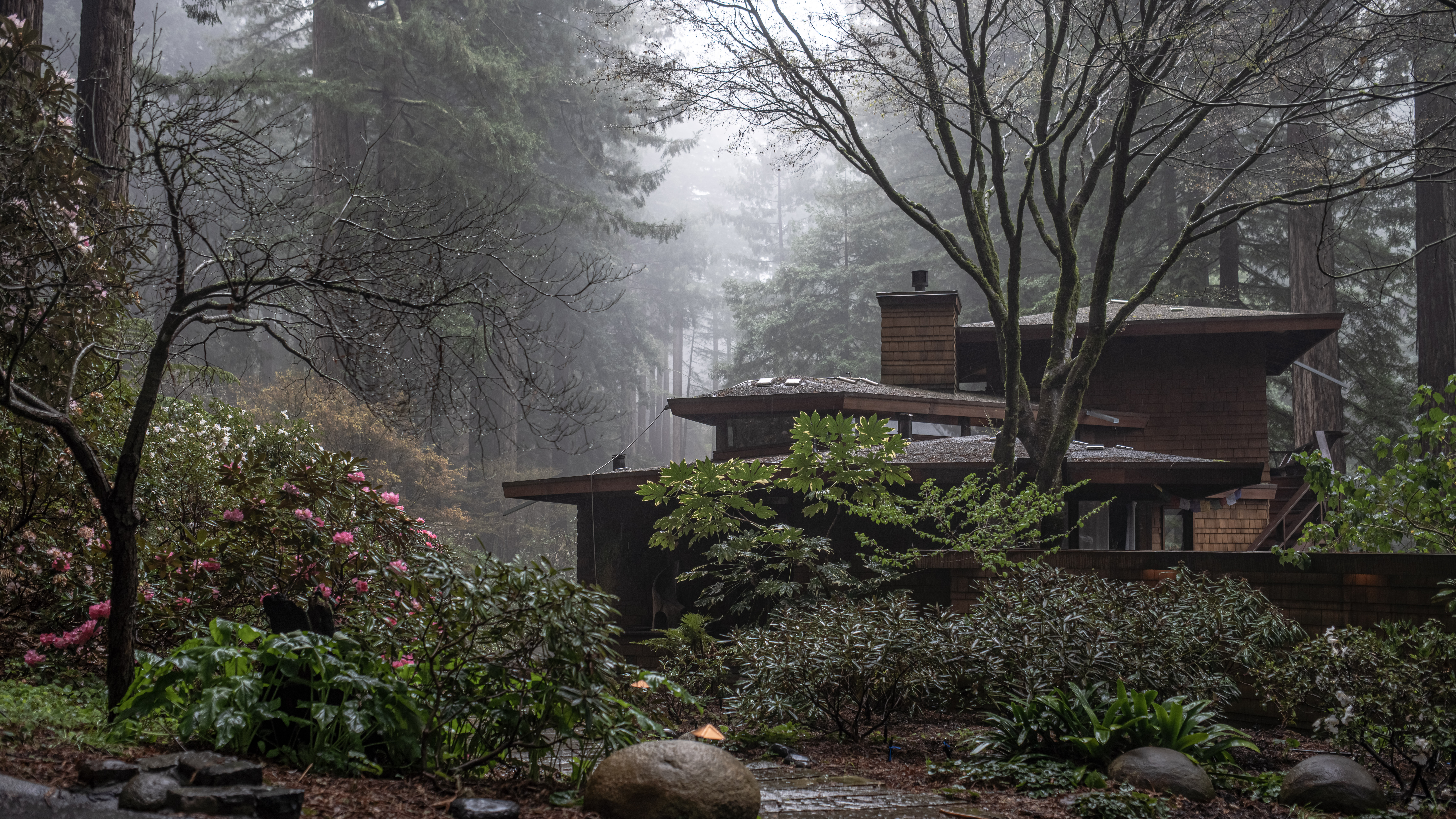
Living in a forest in today’s world of climate change has many of us feeling overwhelmed by the idea of reducing fuel loads on our land. But the key to defensible space is to start close in and move out. It is the reverse of peeling an onion and follows key permaculture principles of starting in the center and moving further and further out in concentric circles.
The goal of defensible space is to:
- eliminate pathways for a wildfire to burn directly to the home
- reduce radiant heat exposures
- reduce the potential for embers to ignite vegetation and other combustible materials adjacent to the home
- ensure access to your home for firefighters
- provide a safe place for fire personnel to defend the home and allow safe routes for evacuation.
Defensible space is the buffer you create between a building on your property and the grass, trees, shrubs, or any wildland area that surrounds it. Defensible space will help slow or stop the spread of wildfire and protect your home from catching fire – either from direct flame contact or radiant heat. Defensible space is also essential to help protect firefighters when they are defending your home.
Your home may be the most valuable investment you ever make. If you live in a high-risk fire hazard area, protect against the chance of losing that investment by creating defensible space and hardening your home.
Creating defensible space does not mean you need a ring of bare dirt around your home! Through proper planning, you can have both a beautiful landscape and a fire safe home.
Defensible Space Zones
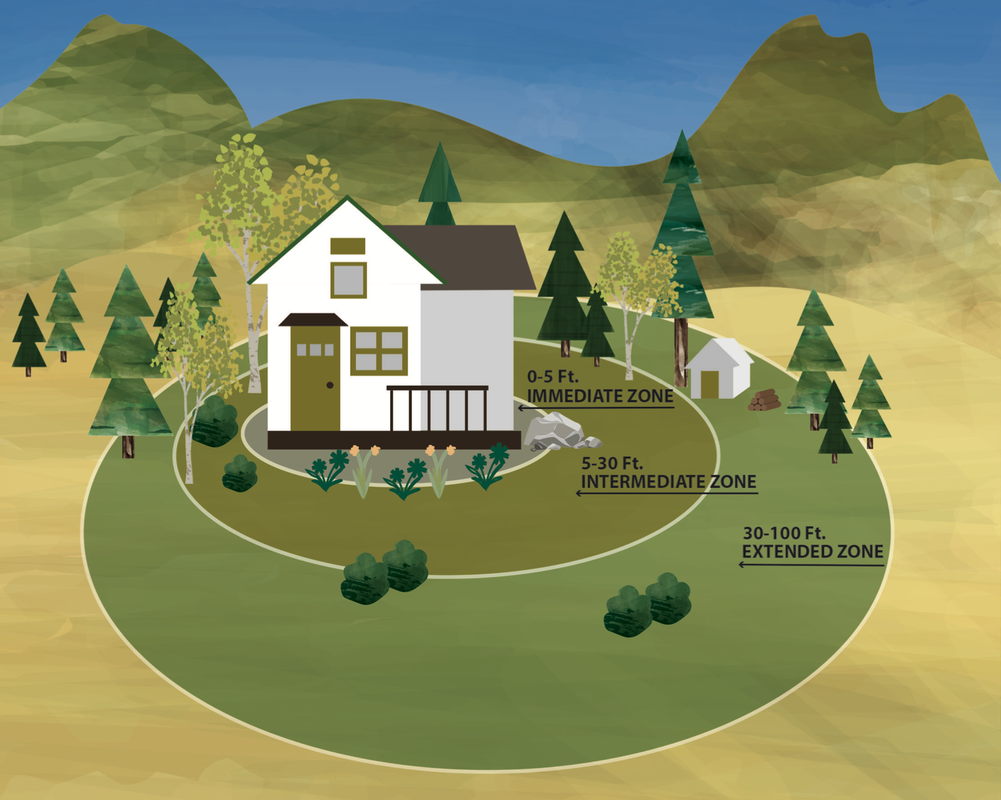
Safer West County recommends homeowners utilize the “Home Ignition Zone” concept to make up the required 100 feet of defensible space recommended by Calfire.
Three zones make up the required 100 feet of defensible space:
- Zone Zero extends zero to five feet from structures, including the building itself, and should be completely free of combustibles.
- Zone 1 begins five feet from your house and extends 30 feet away. The most aggressive clearance is required closest to the structure. The main motto here is keep it green and clean within 30 feet. Remove dead and dying plants or branches. Water to keep plants thriving, not in stress. Plant with room between plants.
- Zone 2 lies beyond the home defense zone, extending at least 100 feet from the house or to your property line. Greater defense zone widths may be necessary if your home is on a steep slope or in a windswept exposure.
- The Access Zone, Zone 3, is adjacent to roads and driveways, fourteen feet overhead and ten feet from the edge of the roadway.
What is your legal responsibility?
Detailed descriptions of action that is legally required for each zone can be found here
Think small. Start today.
Just like with home hardening, there are many small things you can do today to improve your home’s fire resiliency.
- Move combustible materials away from your home. Look for wood piles, BBQ grill propane tanks, push brooms, and other items you might be keeping close at hand for convenience that might endanger your home.
- Trim trees to make sure no branches hang over your roof or chimneys.
- Prune back or transplant bushes from around your home to remove flammable debris in the first five feet around your home.
- Clean out your rain gutters and blow off debris from your rooftops.
- Remove dead leaves and branches from the first 30 feet around your home.
- Remove vegetation for 10 feet around your propane tanks.
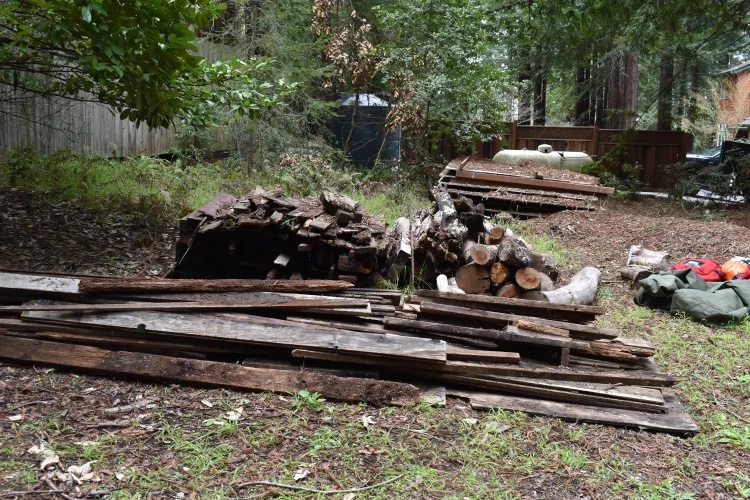
Move wood at least 30 fee from your home.
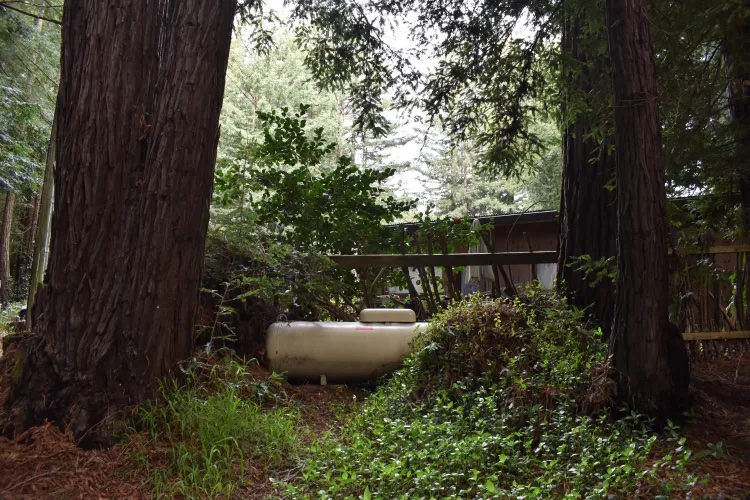
Clear vegetation from around propane tanks.
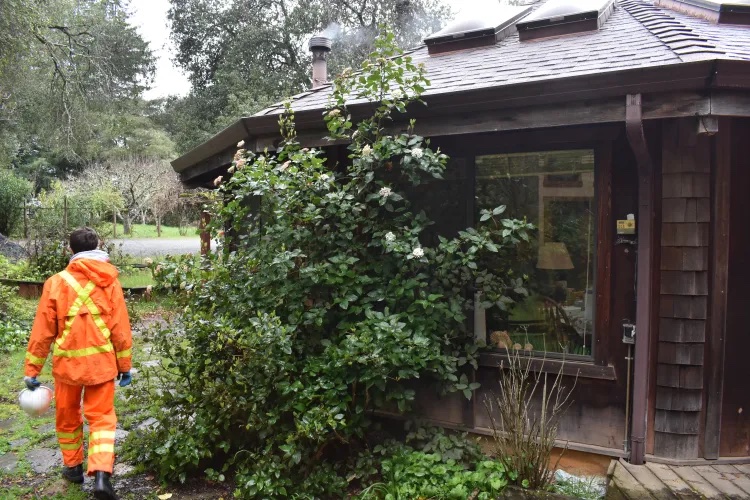
Trim back vegetation in the first five feet around your home. Especially vegetation that comes up to eaves or over the roof.
Eliminate Ladder Fuels
Additional resources
Fire Smart Landscaping tips from CAL FIRE
Safer West County’s blog post about fire safe landscaping
Ellie Insley of the Sonoma Ecology Center outlines landscaping that is both beautiful and firewise
An extensive guide to preparing your home for wildfire from Colorado State
Living with Wildfire; a video presented by Kittitas Fire Adapted Communities Coalition
Your home can survive a wildfire; Presentation by Dr. Jack Cohen and the National Wildfire Protection Association
Recommendations for creating a defensible space from CAL FIRE
The UC Master Gardener Program of Sonoma County outlines Firewise Landscaping
From KQED: CAL FIRE Report Urges Quick Action to Protect High-Risk Town from Wildfire Threats
A helpful homeowner guide from Fire Safe Sonoma
Home hardening and defensible space go hand-in-hand. Check out the resrouces below and learn more about creating defensible space, and how you can harden your home today.
Keep learning!
Learn more about risk mitigation efforts and cover all your bases! Explore our other areas of focus:


